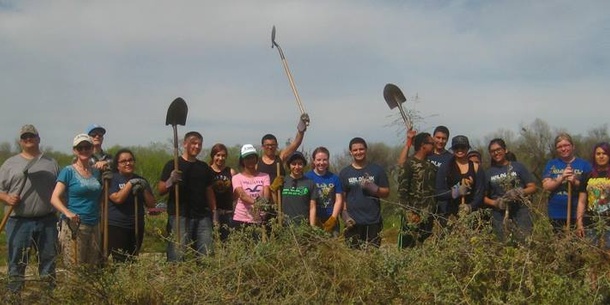- Ambassador: Mar 15, 2015
- San Luis National Wildlife Refuge Service Project
- San Luis National Wildlife Refuge: Headquarters
Students from Turlock and Pitman High School came out on an unusually warm day to complete a stewardship project at the San Luis National Wildlife Refuge, located just 20 minutes from home.
Seventeen students came together on a Sunday morning to give back to a local natural oasis in the Central Valley. Upon arrival, Outdoor Recreation Planner Jack Sparks gave students an orientation to the network of private and public lands that serve as natural habitat for wildlife around the area between Los Banos, Turlock, and Merced. Students learned about the history of the region, the partnerships of land easements, the challenges of managing natural resources when they have already been heavily developed by humans over time. They also learned about a couple of special bird species and the successful growth of the previously-endangered native Californian tule elk.
"I have learned about the elk and how the refuge does in order to protect them from the hunters and from the new technology and roads that have emerged." -Juan
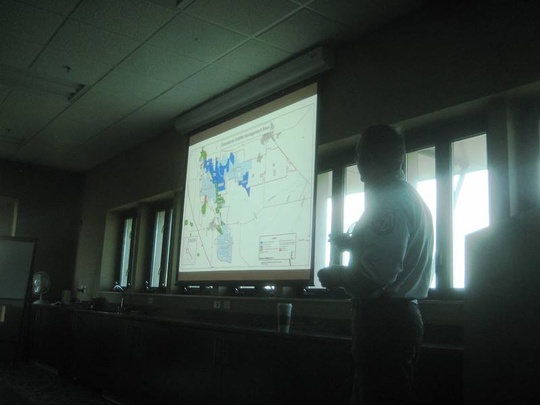
Jack shows a map with the patchwork of private and public lands that provide habitat for native wildlife.
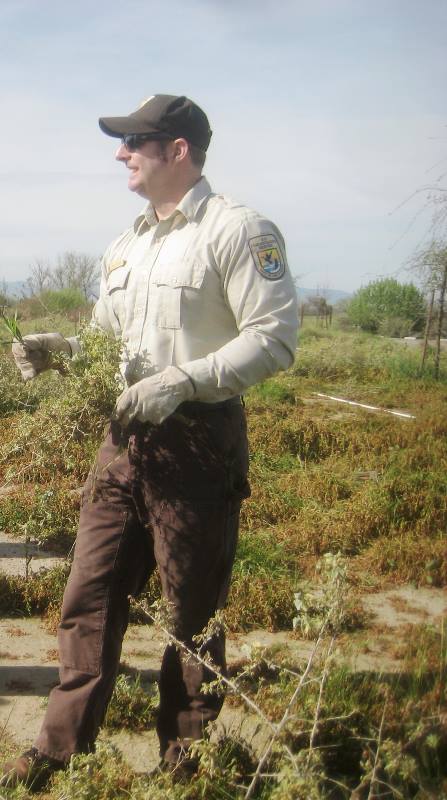
Jack introduces the students to quailbush.
After getting the briefing, students were taught about their service project for the day. Upon building its new visitor center and headquarters, the San Luis staff found themselves with an overabundance of quailbush in the parking lot. Even though the quailbush is native to the area, there is an area in the center of the lot where the refuge would eventually like to put picnic tables and a diverse native plant garden so that visitors can have a more educational experience. Furthermore, quailbush is a big, bushy species that is good habitat for wildlife, which means that local animals, such as rabbits and coyotes might be prone to running across the parking lot in search of cover, which could endanger them. Thus, the group was tasked with removing quailbush from the central divide of the parking lot. During their briefing, students learned how to identify quailbush (to remove) and other native plants (to NOT remove).
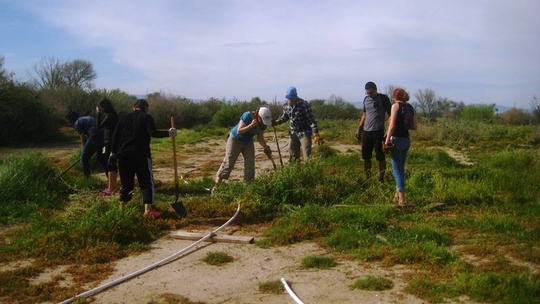
The group quickly gets down to it.
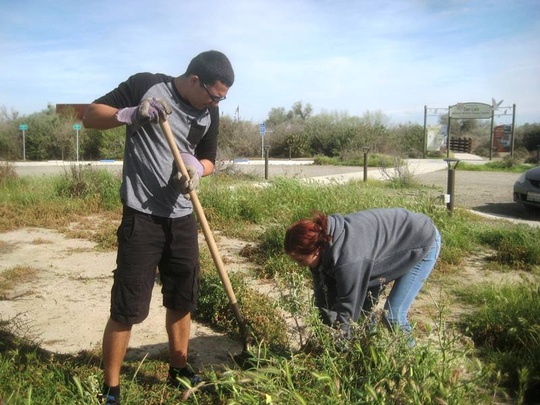
Dino and Erika team up to tackle some big plants.
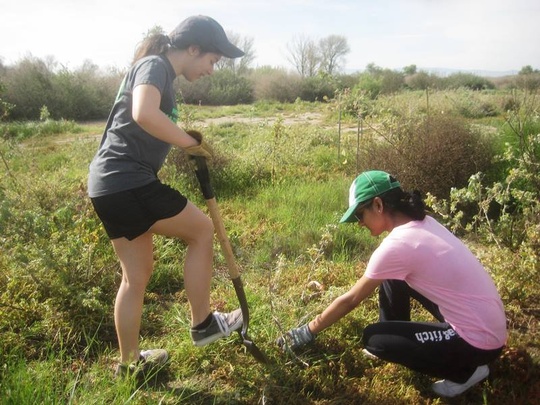
You can do it; put your back in to it!
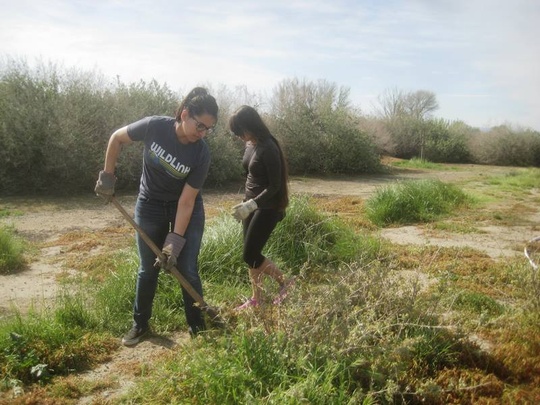
Call a spade a spade.
The work was expected to take four to five hours, but even with the hot temperatures, this talented group of hard workers demolished all the quailbush in roughly two and a half hours.
"I learned that it is easy to come and help clean up the environment since a little bit of help can go a long way." -Trevor
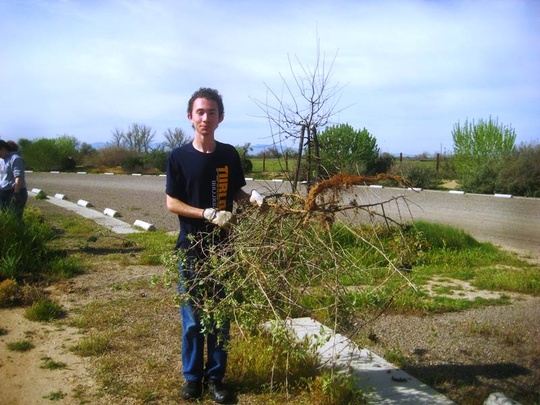
That's a big 'un.
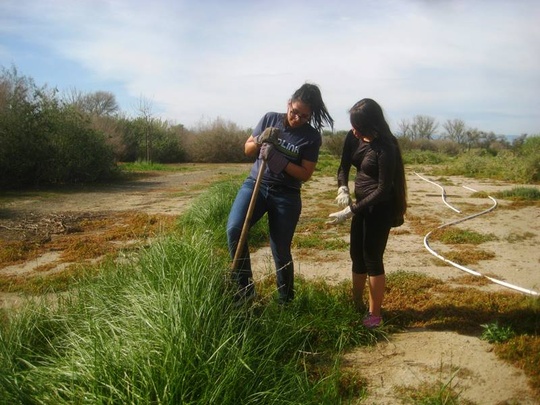
"Hmmm..."
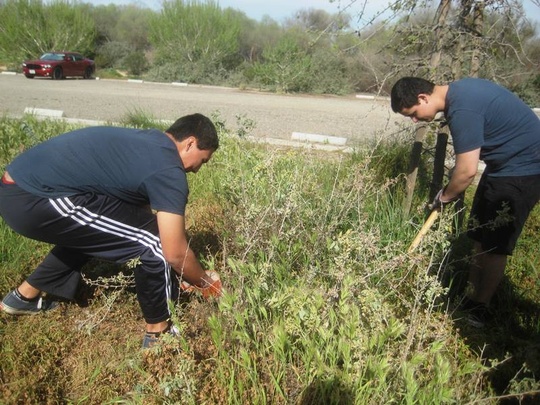
Sometimes harder than a tug-of-war.
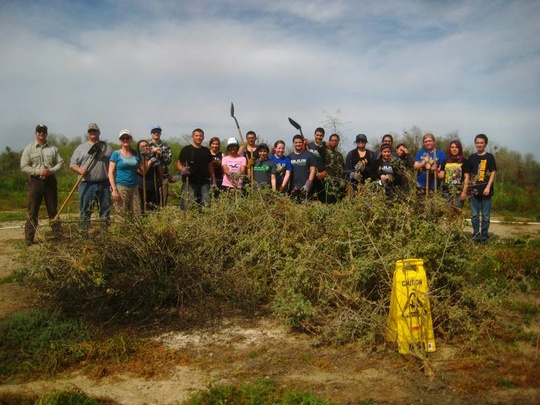
One of several huge piles of quailbush the group removed.
After working, the group enjoyed lunch in the air conditioning of the visitor center, then took time to explore and learn more about the refuge by looking at the interpretive displays on-hand. The students then were treated to a guided tour of one of the refuges auto routes, including viewing and discussion about the tule elk.
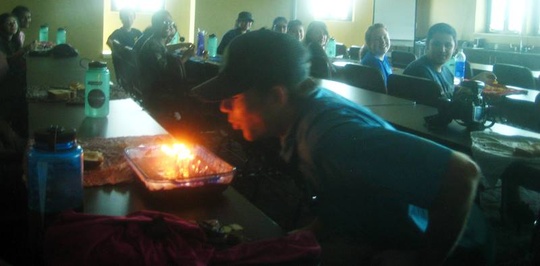
It was Turlock geoscience teacher Ryan Hollister's birthday, so we celebrated with cake!
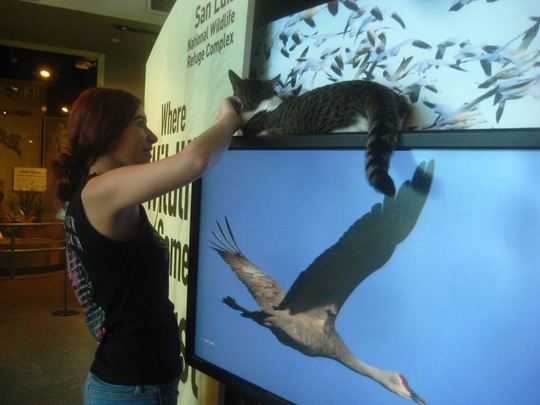
Erika meets Lucky, the resident mouser of the San Luis visitor center.
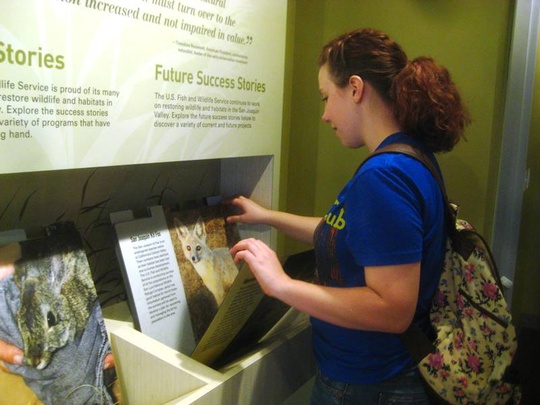
Enjoying the rich interpretive exhibits at the visitor center.
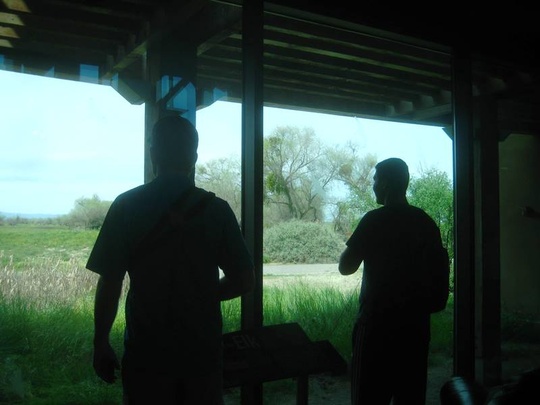
Breyton and Juan catch sight of tule elk in the distance out of the visitor center viewing windows.
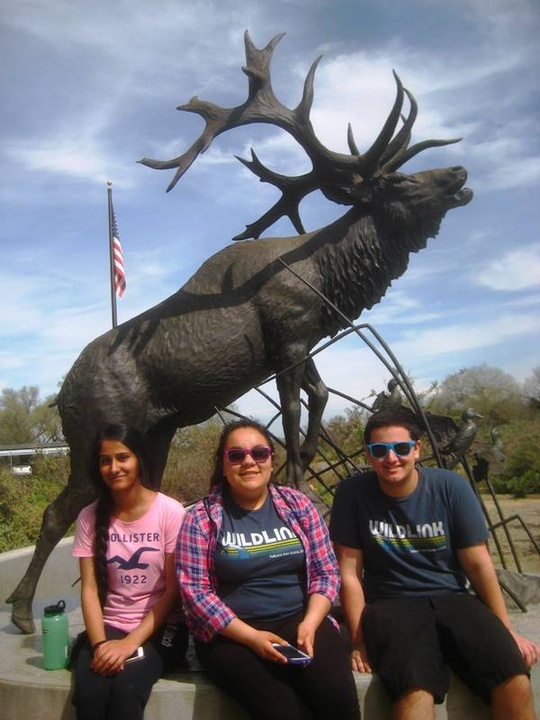
Hey, there's an elk right behind you!
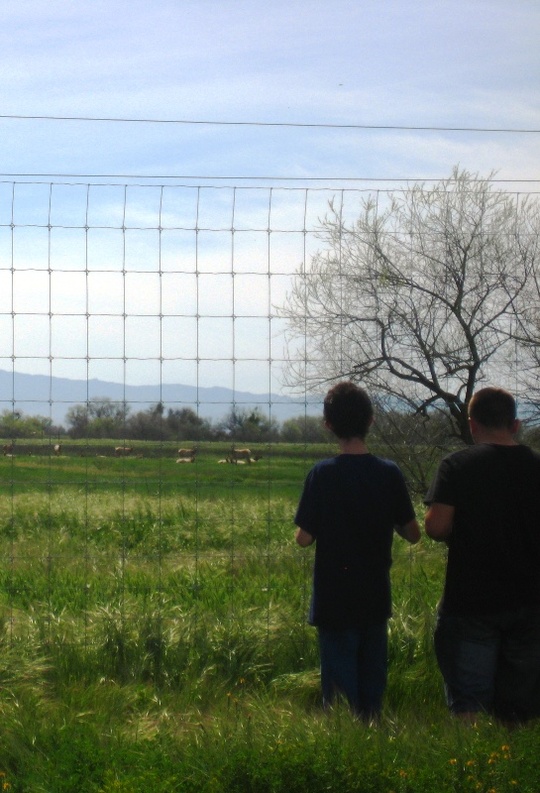
Watching from the edge of the elk roaming area.
Students were tired at the end of the day, but they all expressed their appreciation for this lesser-known gem so close to home. Many said they hoped to return with their families.
Perhaps Samantha best summed up the day's lesson: "Through a collective effort, we can make an important difference in our surroundings."
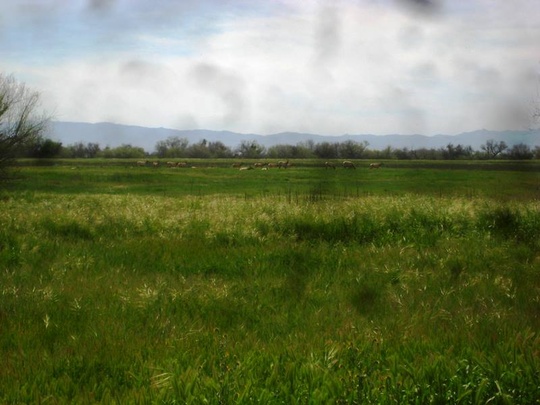
Enjoying a rare California species.
